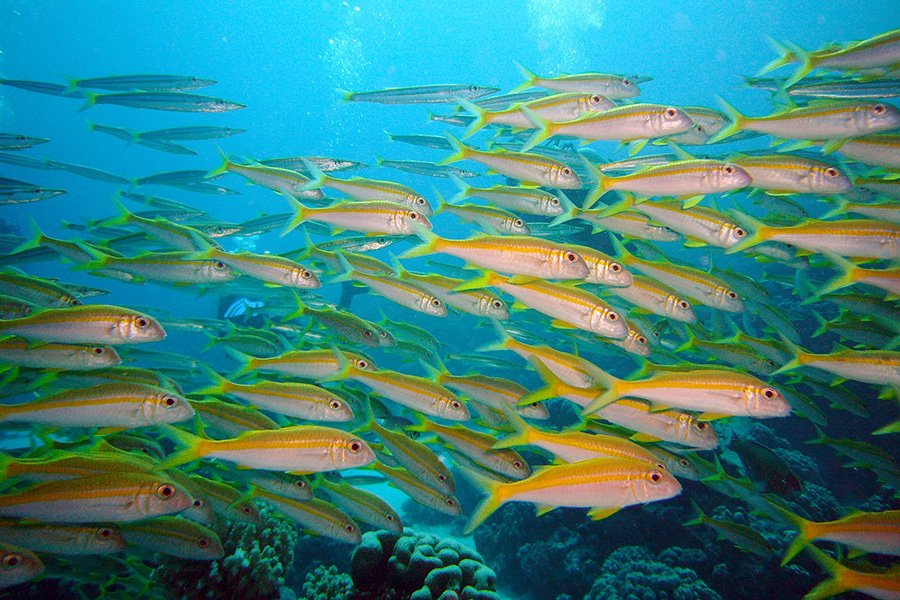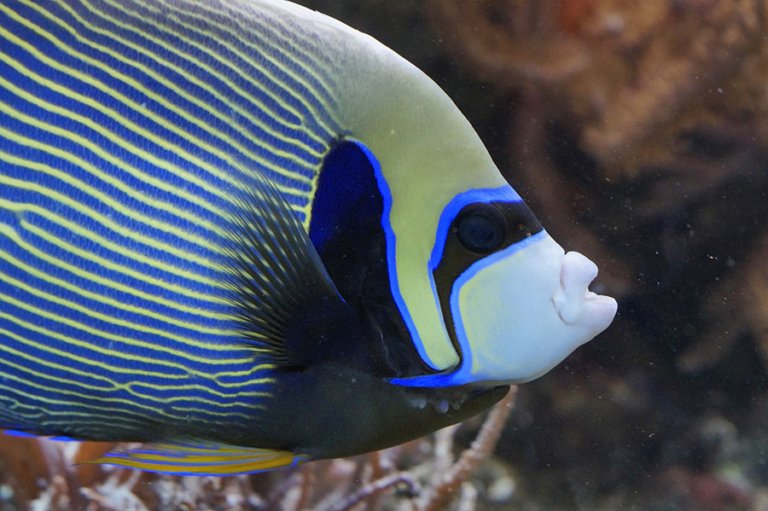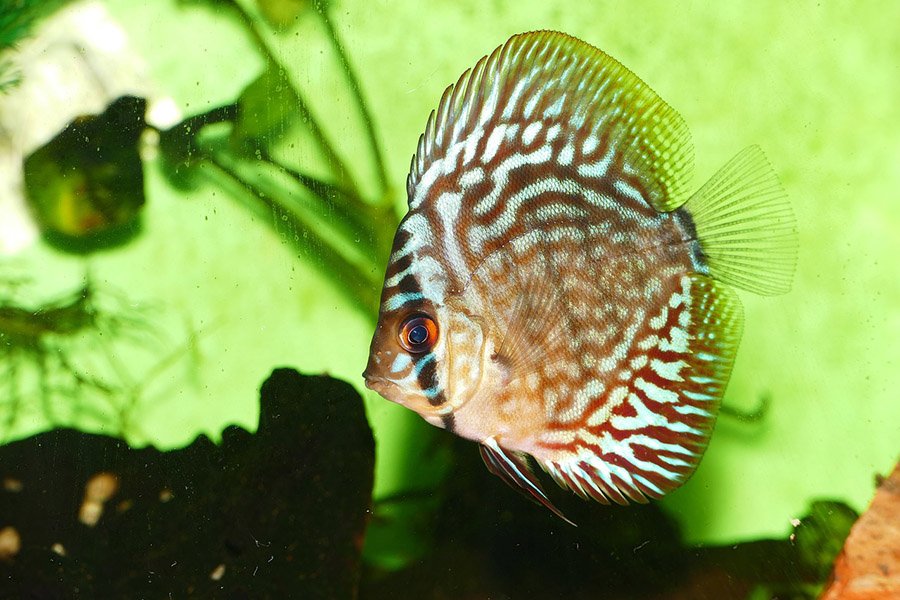
Fish – Types & Characteristics
Welcome to this page dedicated to all things fish! Fish are an amazingly diverse group of aquatic animals, coming in all possible sizes, shapes, and colors, from the tiny colorful neon tetra to the huge whale shark – the largest fish species in the world.
Here, we will take a look at what makes fish unique, their anatomic characteristics and adaptations, and the different types of fish that exist in the world. We will also give quick and easy-to-digest answers to burning questions you may have about fish. Without further ado, let’s dive in.
8 Characteristics of Fish
- Aquatic habitat: Fish live in water, and they are found in both freshwater and saltwater.
- Gills for respiration: Fish breathe through their gills. Gills enable the fish to extract the oxygen dissolved in the water and also expel the carbon dioxide from their body.
- Streamlined body: Fish are shaped like torpedoes, which is the most effective shape to reduce drag when moving underwater.
- Scales: Most fish have scales covering their body and protecting it from parasites. It may not look like it but sharks also have a type of very small scales, called dermal denticles. However, jawless fish have skin, but no scales.
- Fins for locomotion: Fish use fins to propel themselves, steer, and control their position in the water.
- Ectotherms: Fish are cold-blooded, or ectotherms, meaning that they can’t produce their own heat and their body temperature depends on the water temperature around them.
- Swim bladder: Fish (except cartilaginous fish – i.e. sharks, rays…) have a swim bladder, which is a gas-filled organ that allows fish to maintain their buoyancy.
- Lateral line system: Fish have a lateral line system, a system of sensory organs enabling them to sense changes in water pressure, and detect vibrations and movement.
All these characteristics make fish perfectly adapted to their aquatic environment, enabling them to sense their surroundings, find their food and avoid predators.

The 3 Types of Fish
There are 3 different classes and superclasses that make up this group of animals we call fish: superclass Osteichthyes (bony fish), superclass Agnatha (jawless fish), and class Chondrichthyes (cartilaginous fish). Each class has its own set of characteristics. Let’s take a closer look at them!

Bony Fish
Members of the superclass Osteichthyes are the bony fish. As their name suggests, they have a skeleton made of hard, calcified bone. They have scales, a swim bladder, and an operculum covering their gills and leading the water toward them, enabling them to breathe whether or not they are swimming. They have jaws, paired fins, and paired nostrils.
Bony fish are by far the largest and most diverse group of fish, with around 28,000 species. It is also the largest group of vertebrates.

Cartilaginous Fish
The class Chondrichthyes are cartilaginous fish. You guessed it, their skeleton is mostly made of cartilage. This group includes sharks, rays, skates, sawfish, and chimeras (also known as ghost sharks).
They have jaws, paired fins, and paired nostrils, but they do not have a swim bladder, unlike other fish. Their body is covered with a type of scales called dermal denticles.
Unlike bony fish, their gills are not covered by an operculum, which means that they have to keep swimming in order to keep driving water through their gills, to breathe.

Jawless Fish
The jawless fish make up the superclass Agnatha. These are an ancient, more primitive group of fish that took a different evolution path from other fish. Today, there are 2 surviving types of fish in this group: lampreys and hagfish.
They have no jaw, and they also lack paired fins. Like other fish, they are cold-blooded but they don’t have scales: their body is covered with skin, itself often covered with protective slime.
Frequently Asked Questions About Fish
Do Fish Sleep?
Yes, fish sleep, even though their sleep doesn’t exactly look like mammals’ sleep – fish brain and mammal brain are very different and hard to compare. You can tell that a fish is sleeping if it lies motionless near the bottom or near the surface. Since fish don’t have eyelids, they sleep with their eyes open.
Do Fish Get Thirsty and Drink Water?
We can imagine that fish don’t get thirsty as they live in the water – they are never short of it. But in reality, it is difficult to know for sure what they feel. But fish do need to “drink” water, just not necessarily in the same way as we do.
For freshwater fish, their tissues are saltier than the water in which they live. As a result, the water will naturally flow in through the gills and hydrates the fish.
For saltwater fish, it is the opposite. Their tissues are less salty than the water in which they live. Therefore, they need to purposely drink through their mouth to stay hydrated.
Do Fish Pee?
Yes, fish pee. Just like us, pee is the result of their metabolism and they have kidneys that produce urine. However, they don’t have a bladder, which means they pee more or less constantly.
Do Fish Have Ears?
Yes, fish have ears, but we can’t see them, they have no opening. They are located inside their head, more precisely behind their eyes. These inner ears feature ooliths (ear stones) that make hearing possible, through the fish’s body.
Do Fish Blink?
Since fish do not have eyelids, they can’t blink.
Do Fish Hibernate?
Some fish living in cold water slow down their metabolism and rest during winter. They enter a state called torpor. It resembles hibernation, but it is technically not the same as mammals’ hibernation.
Do Fish Grow Fins Back?
Yes, fish can heal and regrow their fins and tails if it is healthy and if their living conditions are good.
Do Fish See Color?
It depends on the species. Those more active during the day in bright environments tend to have 3 color cones in their retinas, just like humans. Some fish are even able to see a 4th color – ultraviolets. Fish that live in darker environments or that are more active during the night are more adapted to seeing in dim light, but they see fewer colors.
How Many Fish Are In The World?
Scientists estimate that there are about 3.5 trillion fish in the world, and more than 20,000 species.
Fish Lists
Fish by First Letter
Browse lists of fish that start with…
Fish by Number of Letters
Browse lists of fish …
Learn More About Fish Species
Links to articles packed with surprising facts and knowledge to further learn about amazing species of fish, so you know what you are looking at on your next wildlife trip!

Our Fish Fact Sheets (A – C):
